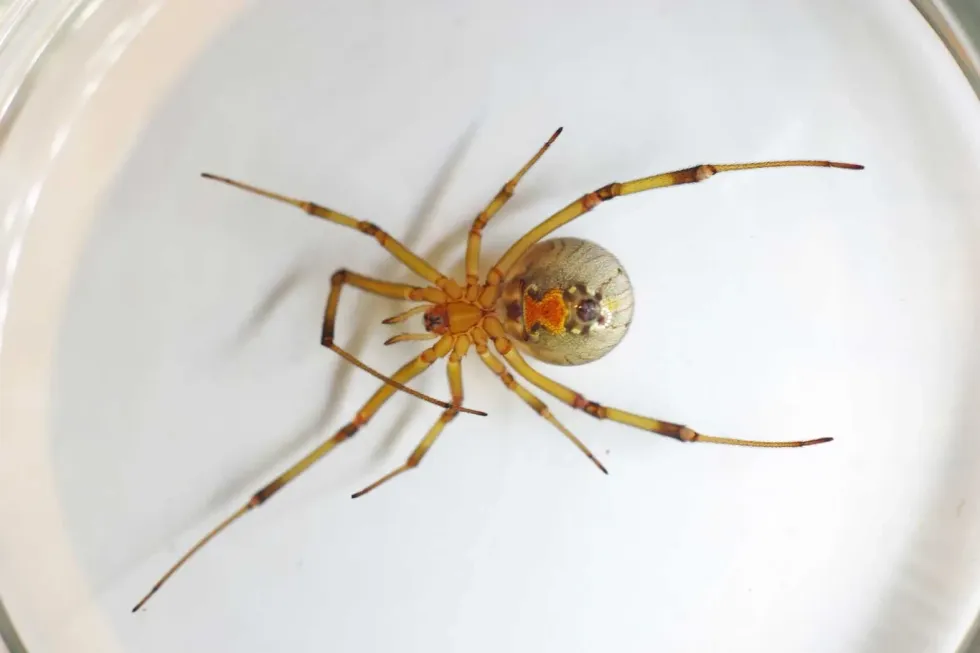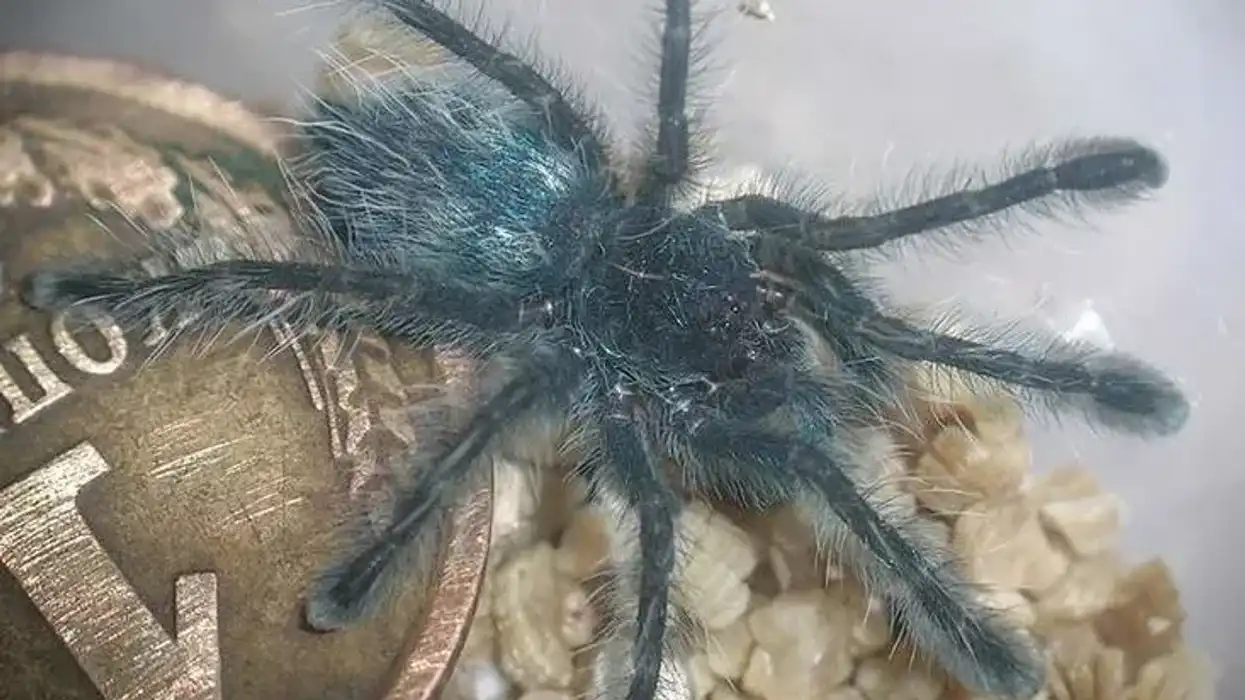Spiders are seen with disgust and many people even fear them. Apart from a superhero based on this animal's unique abilities. Understanding more about spiders can change the perception of them and help us to appreciate them more.
In this article, we will explore some really intriguing facts about the brown widow spiders (Latrodectus geometricus). These spiders go by other names such as brown button spider, house button spider, geometric button spider, as well as a grey widow.
They have a significant population in many tropical areas like South Africa, United States, Australia, Uruguay, and more. Their cosmopolitan status makes it difficult to ascertain whether they originated from South America or Africa.
They are venomous and are in fact one of the few species of spiders that are medically significant and is found in North America, although fatality through their venom is very unlikely.
But it is best to stay away from these crawly creatures. However, it's not all bad to have Brown Widow spiders as part of an ecosystem, as they eat a lot of the insects that infest our homes like flies and mosquitos.
Learn more about Brown widow spiders by reading these cool facts.
If you find this article educational, do read these articles on yellow sac spider and six-eyed sand spider.
Brown Widow Interesting Facts
What type of animal is a brown widow?
The Brown widow (Latrodectus geometricus) is a type of spider.
The brown widow spider, much like every other species of spiders like the black widow, belongs to the class of Arachnida.
How many brown widows are there in the world?
The exact population of brown widow spiders is not known.
Where does a brown widow live?
Brown widow species build their webs and live near vegetation in tropic and semi-tropic regions of the world. They are often found in secluded places made by humans like garages, empty lots, rooms, storage closets, or under automobiles.
What is a brown widow's habitat?
They were originally thought to have been originated from Africa, although they were first identified in South America. In North America, they were part of Florida but are now widespread in many states including South Carolina, Texas, and more.
Their choice of habitat is more exposed than black widow spiders. Thus you are more likely to run into a brown widow and get bit, even though they are shy and avoid human interaction.
Who do brown widows live with?
Like most spiders, the brown widow spider leads a solitary life. There are only about 100 species that live in groups or colonies, the brown widow does not make this list. Although, the brown widow does actively look for a mating partner.
How long does a brown widow live?
Brown widow spiders have a lifespan that ranges between one to two years.
How do they reproduce?
Brown widow spider eggs are not fertilized in a manner similar to mammals. Instead, males have their sperm on their appendages which they then use to fertilize the egg sacs.
The brown widow egg sac is quite distinct and resembles a pointed silky fluff ball. The egg sac is roughly 0.4 in (1 cm) in diameter.
The eggs take between two to three weeksweeks to hatch, but spiderlings will stay in the egg sacs for a few more days or even up to a month. Over the course of its life, a widow spider will reproduce prolifically up to 20 times.
What is their conservation status?
The conservation status of this invasive species is Not Evaluated as per the International Union for Conservation of Nature (IUCN) Red List.
Brown Widow Fun Facts
What do brown widow look like?
Brown Widows, as the name suggests are tan, brown, or dark brown in color with black markings. The brown widow spiders have a body shape that resembles a little bit like an hourglass which is colored in some shade of orange.
They also have geometric markings on the underside of their abdomen. These distinct markings on their abdomen explain the reason behind their scientific name, the brown widow spider Latrodectus geometricus.
How cute are they?
Their striped legs and fascinating geometric patterns on the underside of the abdomen are not endearing enough to make up for the fact that they are scary spiders and thus most people are unlikely to consider them cute.
How do they communicate?
There is not enough research done on how brown widows communicate. What we do know is that due to their poor eyesight, they are dependent on the vibration of their webs to notify them about threats and also about different trapped prey.
However, looking at the pattern of communication in black widow spiders, one can assume about the brown widow's communication as well. Black widow spider builds messy webs and uses this web as a means to communicate, plus with pheromones.
Pheromones are deposited on the silk by the female Latrodectus mactans when they are ready to mate. The male black widows can decipher the mating history, age, as well as hunger level of the female by sniffing pheromones.
How big is a brown widow?
There is a distinction in the size of a female and a male brown widow spider. The female brown widows have a body length of 0.275 in - 1.5 in (7 -38 mm) whereas the latter is much smaller at a length of 0.078 in - 0.157 in (2-4 mm). Their size is similar to that of a quarter.
How fast can a brown widow move?
Brown widow spider (Latrodectus geometricus) rely on coordinated movements of their eight legs to walk and run.
How much does a brown widow weigh?
The brown widow spider is so small that its weight is negligible.
What are their male and female names of the species?
There are no unique names for the males and females brown widow spiders.
What would you call a baby brown widow?
Baby brown widow spiders are called spiderlings.
What do they eat?
Brown widow spiders are carnivores that feed on small insects that get trapped in their webs such as moths, flies, and mosquitos.
Are they poisonous?
Yes, female brown widow bites are poisonous in nature but the males are not even known to bite, much less be poisonous. Although they are more poisonous than the black widow spider, a brown widow spider bite is less harmful.
Brown widow spider bites inject less venom in comparison to the black widow venom but can cause serious pain and even lead to seizures in extreme cases.
Would they make a good pet?
Being a spider with potent venom, the brown widow spider Latrodectus can be kept as pets but with extreme caution. The best way to keep a brown widow spider is to keep it in a cage that is turned upside-down.
This setup will help you in opening the cage without disturbing your pet and its web. Terrariums, jars, and aquariums also make for great enclosures for your brown widow spider, where it would get ample space to build its web.
Did you know...
Even though the spider bite is venomous in nature, only a small percent of brown widow spider venom can lead to severe symptoms and damage. They have never been known to be fatal to humans.
The brown widow spider Latrodectus is less likely to bite humans as they are shy and reside in places where they cannot be discovered. They try to avoid human contact as much as possible. Hence, you should not kill them either until they pose to be absolutely harmful.
Where does the brown widow get its name from?
Brown widow spiders have an infamous reputation that the female spider kills and consumes the males after mating. This gruesome reputation explains their self-inflicted widow status.
While sexual cannibalism in this species is a fact, its frequency is often exaggerated. It is quite exceptional to see this species thrive, despite a trait that on the surface should have become extinct with evolution by natural selection.
How poisonous is a brown widow?
A brown widow spider bites when it feels threatened or disturbed. In some extreme cases, brown widow spider bite and its potent venom can result in necrosis.
The venom present in a brown widow bite makes the affected area red, swollen and can inflict joint pain, fever, and nausea. If you suspect you've been exposed to brown widow spider venom, and are feeling the above symptoms, it is best to seek medical help.
Here at Kidadl, we have carefully created lots of interesting family-friendly animal facts for everyone to discover! Learn more about some other arthropods including Brazilian wandering spider, or orb-weaver spider.
You can even occupy yourself at home by drawing one on our brown widow coloring pages.










